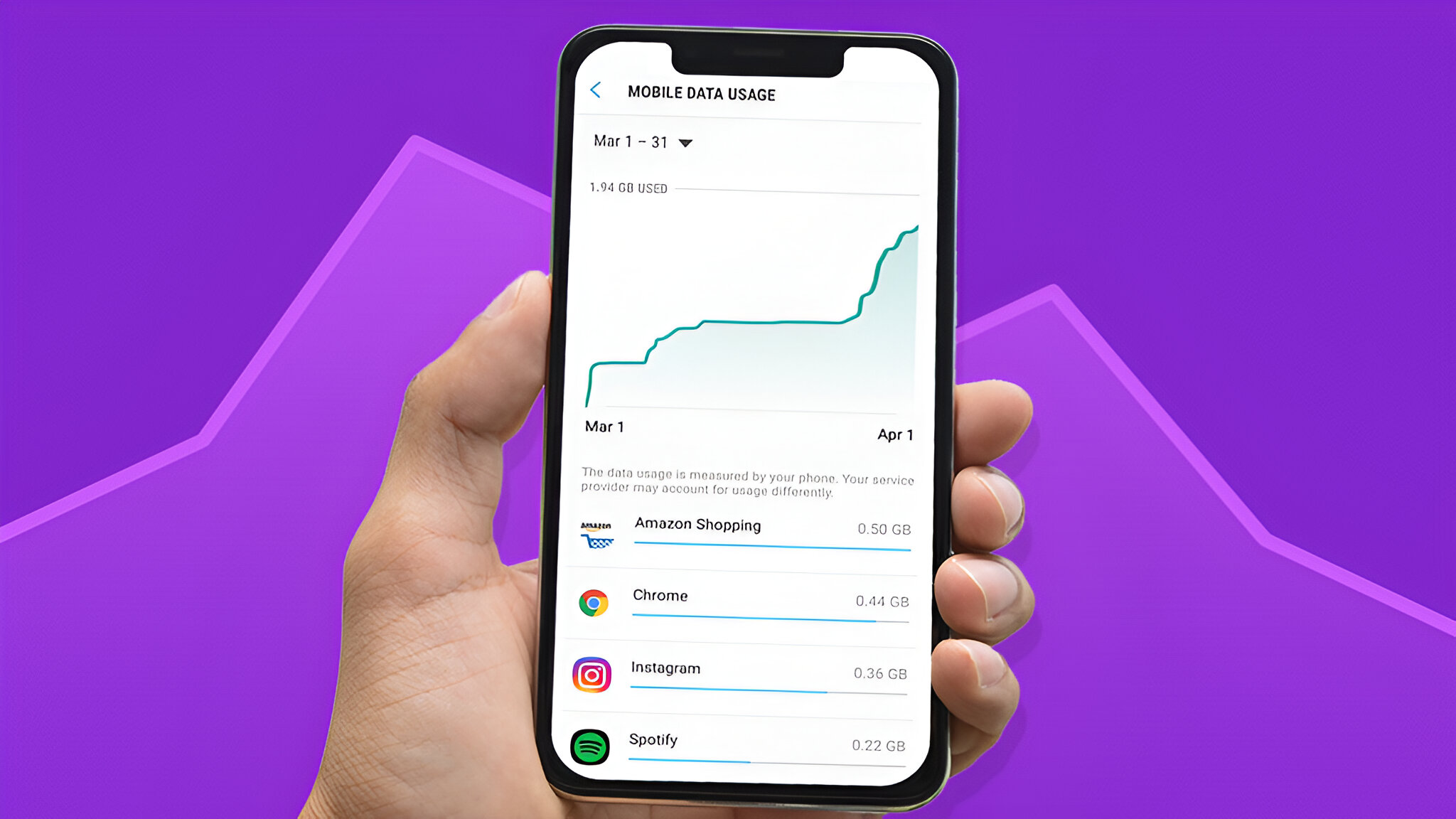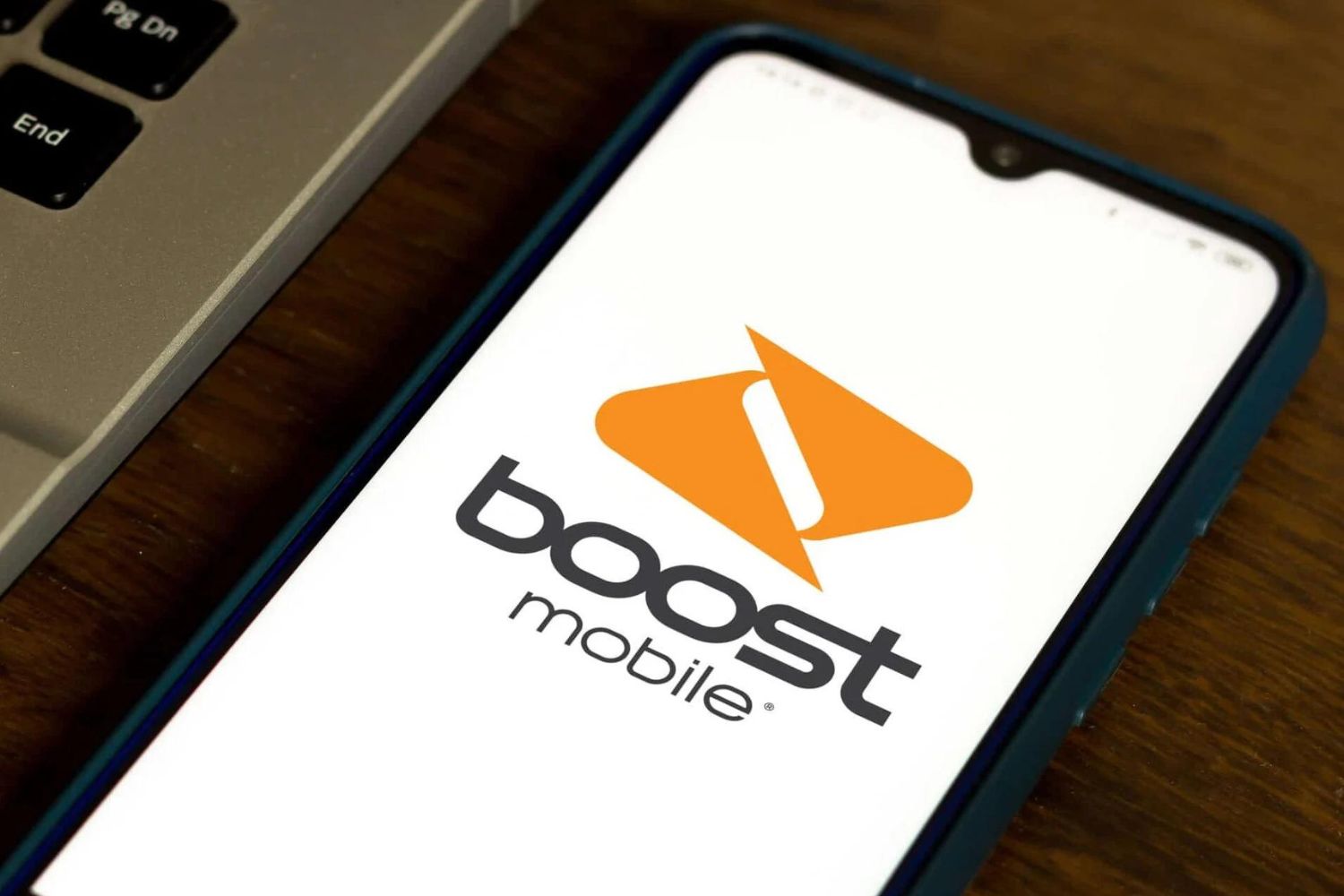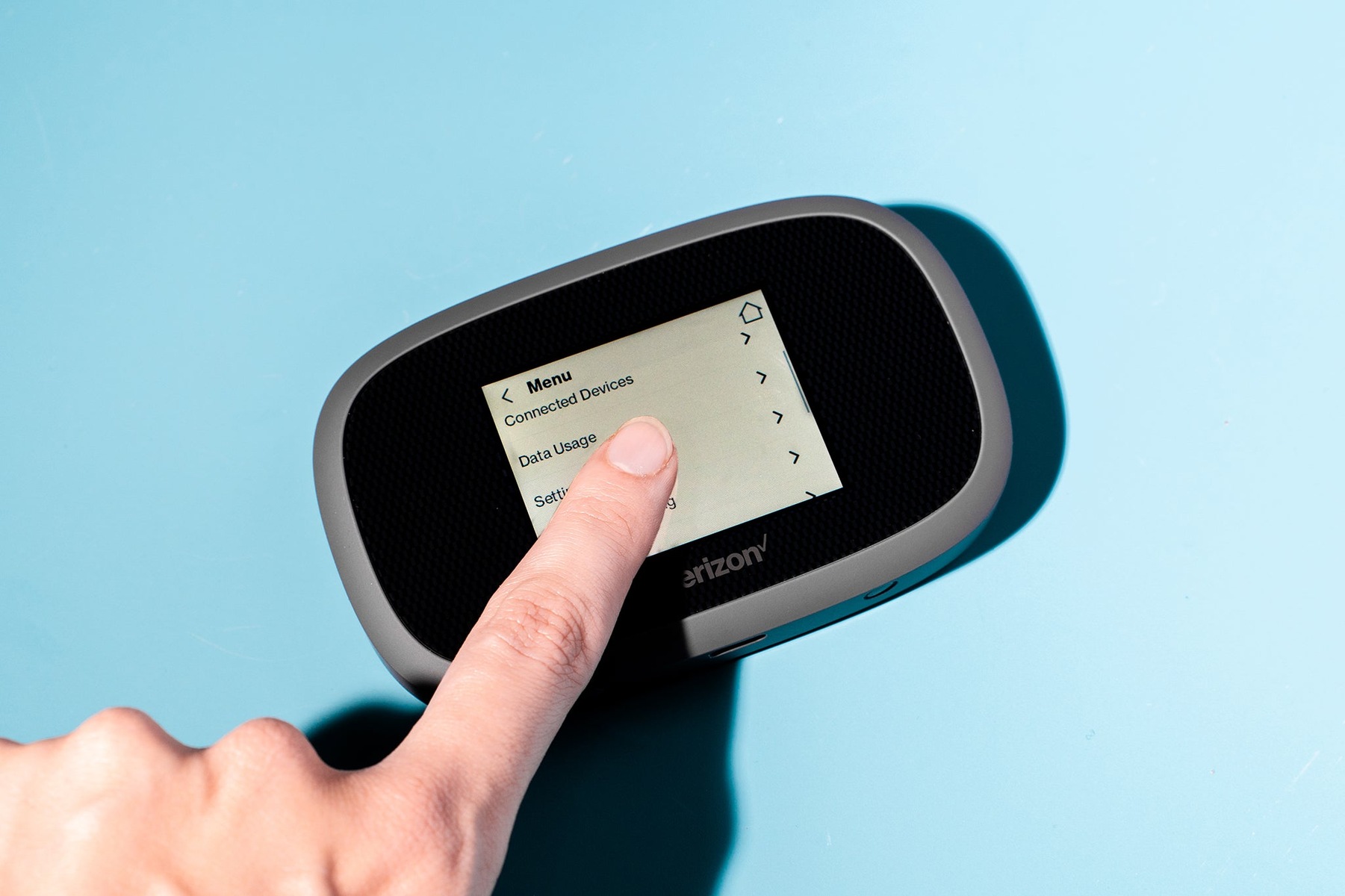Check Your Data Usage Regularly
Regularly checking your data usage is a fundamental step in managing your remaining hotspot data effectively. By keeping a close eye on your data consumption, you gain valuable insights into your usage patterns and can make informed decisions to avoid exceeding your limits. Here are some essential tips to help you stay on top of your data usage:
-
Access Your Data Usage Metrics: Most mobile carriers provide convenient ways to monitor your data usage. You can typically access this information through your account portal on the carrier's website or via their dedicated mobile app. Take advantage of these resources to track your data usage accurately.
-
Set Reminders to Check Usage: In the hustle and bustle of daily life, it's easy to overlook checking your data usage. Setting a recurring reminder on your smartphone or calendar can serve as a helpful prompt to review your data consumption regularly. Whether it's a weekly or bi-weekly reminder, finding a schedule that works for you ensures that monitoring your data usage becomes a routine part of your digital habits.
-
Understand Your Data Allocation: Different mobile plans offer varying data allocations, so it's crucial to know the specifics of your plan. Familiarize yourself with the amount of data included in your plan and the billing cycle duration. This knowledge forms the foundation for effectively managing your data usage and avoiding unexpected overage charges.
-
Keep Tabs on Data-Intensive Activities: Certain online activities, such as high-definition video streaming, online gaming, and large file downloads, can consume significant amounts of data. By being mindful of these data-intensive activities, you can make conscious decisions about when and how to engage in them, thus optimizing your data usage.
-
Review Historical Usage Trends: Monitoring your historical data usage trends can provide valuable insights into your typical consumption patterns. By identifying peak usage periods or unexpected spikes, you can adjust your usage behavior accordingly to stay within your data limits.
Regularly checking your data usage empowers you to take proactive steps in managing your remaining hotspot data. By staying informed about your consumption patterns, you can make informed choices to optimize your data usage and avoid unnecessary overage fees.
Set Up Data Usage Alerts
Setting up data usage alerts is a proactive approach to effectively manage your remaining hotspot data. By configuring alerts, you can receive timely notifications as you approach predefined data thresholds, empowering you to make informed decisions and avoid unexpected overage charges. Here's a detailed look at the key steps and benefits of implementing data usage alerts:
Benefits of Data Usage Alerts
- Prevent Overages: Data usage alerts serve as a safeguard against exceeding your data limits. By receiving notifications before reaching your data cap, you can take preemptive actions to avoid costly overage charges.
- Enhance Awareness: Alerts create heightened awareness of your data usage, prompting you to be more conscious of your online activities and their associated data consumption. This increased awareness can lead to more mindful usage habits.
- Customized Notifications: Many mobile carriers allow users to customize their data usage alert thresholds. This flexibility enables you to set alerts based on your specific data plan and usage patterns, ensuring that the notifications align with your individual needs.
How to Set Up Data Usage Alerts
-
Access Your Account Settings: Begin by logging into your mobile carrier's account portal or accessing their mobile app. Navigate to the data usage or account settings section to locate the option for setting up data usage alerts.
-
Define Alert Thresholds: Once within the data usage settings, you can specify the desired data thresholds for receiving alerts. This typically involves setting a notification for when you reach a certain percentage of your data allowance or a specific data usage volume.
-
Select Notification Preferences: Depending on the carrier's capabilities, you may have the option to choose the preferred method of receiving alerts. This can include SMS notifications, push notifications through the carrier's app, or email alerts.
-
Review and Confirm: After configuring the alert thresholds and notification preferences, review the settings to ensure they align with your data management goals. Once satisfied, confirm and save the settings to activate the data usage alerts.
Maximizing the Effectiveness of Alerts
-
Regularly Monitor Alerts: Actively monitor the alerts you receive and use them as cues to assess your current data usage status. Regularly reviewing these notifications helps you stay mindful of your data consumption and prompts timely adjustments if needed.
-
Adjust Thresholds as Needed: As your usage patterns evolve, consider adjusting your alert thresholds to reflect any changes. This adaptability ensures that the alerts remain aligned with your current data management requirements.
-
Educate Family Members: If you're part of a shared data plan, ensure that all users are aware of the data usage alerts and understand their significance. This collective awareness fosters a collaborative effort in managing data usage responsibly.
Implementing data usage alerts is a proactive strategy that empowers you to maintain control over your remaining hotspot data. By leveraging these alerts, you can stay informed about your data consumption, mitigate the risk of overages, and cultivate mindful usage habits, ultimately optimizing your data management experience.
Use Wi-Fi Whenever Possible
Maximizing the use of Wi-Fi presents a practical and effective approach to conserve your remaining hotspot data. Leveraging Wi-Fi connections whenever feasible not only reduces your reliance on cellular data but also offers various advantages that contribute to a more efficient and economical data management strategy.
Advantages of Wi-Fi Usage
-
Data Conservation: Utilizing Wi-Fi networks for activities such as streaming, downloading large files, and software updates significantly diminishes the consumption of your cellular data. By offloading these data-intensive tasks to Wi-Fi, you preserve your limited hotspot data for essential on-the-go scenarios.
-
Enhanced Speed and Stability: Wi-Fi connections often deliver superior speed and stability compared to cellular data, especially in environments with robust Wi-Fi infrastructure. This translates to smoother online experiences, faster downloads, and seamless video streaming, enhancing overall user satisfaction.
-
Unrestricted Usage: When connected to Wi-Fi, you can engage in data-heavy activities without being constrained by data caps or usage limitations. This freedom allows you to fully immerse yourself in bandwidth-intensive applications, such as high-definition video streaming or online gaming, without concerns about exhausting your hotspot data.
-
Cost Savings: By maximizing Wi-Fi usage, you effectively reduce your reliance on cellular data, potentially leading to lower data plan expenses. Minimizing the consumption of your limited hotspot data can help avoid costly overage charges and contribute to overall cost savings in the long run.
Practical Implementation Tips
-
Prioritize Wi-Fi Networks: Whenever available, prioritize connecting to trusted Wi-Fi networks in your home, workplace, or public spaces. By defaulting to Wi-Fi connections, you minimize the depletion of your cellular data reserves.
-
Enable Auto-Join for Trusted Networks: Configure your smartphone to automatically join known and secure Wi-Fi networks. This automated connection process ensures seamless transitions to Wi-Fi, further reducing reliance on cellular data.
-
Download Content for Offline Access: Take advantage of Wi-Fi networks to download entertainment content, maps, and documents for offline access. This proactive approach enables you to enjoy these resources without consuming your precious hotspot data while on the move.
-
Update Apps and Software Over Wi-Fi: Configure your device to update apps and system software exclusively over Wi-Fi connections. This practice prevents large update files from impacting your cellular data allocation.
-
Utilize Wi-Fi Calling and Messaging: When connected to Wi-Fi, leverage Wi-Fi calling and messaging features offered by your smartphone to communicate without utilizing cellular voice or text allowances.
Embracing a Wi-Fi-Centric Approach
By embracing a Wi-Fi-centric approach and integrating these practical tips into your data management routine, you can effectively optimize your remaining hotspot data. This proactive strategy not only conserves your limited cellular data but also enhances your overall digital experience through improved speed, stability, and cost efficiency. Prioritizing Wi-Fi whenever possible empowers you to make the most of your data resources while minimizing the risk of exceeding your data limits.
Monitor Data Usage by App
Monitoring data usage by individual apps is a pivotal aspect of efficient data management, offering valuable insights into the specific applications consuming your remaining hotspot data. By scrutinizing app-level data usage, you can pinpoint the culprits behind excessive data consumption, make informed decisions about usage prioritization, and implement targeted optimizations to maximize your data allocation.
Understanding App-Level Data Consumption
Gaining visibility into app-level data usage provides a granular perspective on how different applications impact your overall data consumption. This insight is particularly valuable in identifying data-intensive apps that may be inadvertently draining your hotspot data. By comprehending the data consumption patterns of individual apps, you can tailor your usage behavior and settings to align with your data management goals.
Accessing App Data Usage Metrics
Both Android and iOS devices offer built-in tools to track app-specific data usage. These features empower users to delve into detailed data consumption statistics for each app installed on their devices. By accessing these metrics, users can identify the apps responsible for significant data usage and take targeted actions to regulate their impact.
Implementing App-Specific Controls
Once you've identified apps with substantial data consumption, consider implementing app-specific controls to manage their usage. Many mobile operating systems allow users to restrict background data usage for individual apps, effectively curbing their data consumption when running in the background. By utilizing these controls, you can exert greater influence over how apps utilize your hotspot data, optimizing your overall data management strategy.
Monitoring Real-Time Data Usage
Incorporating real-time data usage monitoring tools or apps can provide continuous visibility into app-level data consumption. These tools offer dynamic insights, allowing users to monitor which apps are currently utilizing data and the corresponding volume of data being consumed. Real-time monitoring empowers users to promptly identify data-hungry apps and take immediate corrective actions to mitigate their impact on remaining hotspot data.
Optimizing App Settings
Reviewing and adjusting the settings of data-intensive apps can yield substantial data savings. For instance, streaming apps often offer quality settings that allow users to adjust video resolution, thereby influencing the amount of data consumed during playback. Similarly, messaging and social media apps may feature options to limit media auto-download, conserving data when viewing images and videos.
Proactive Mitigation of Data-Intensive Apps
By proactively monitoring and managing app-level data usage, users can mitigate the impact of data-intensive apps on their remaining hotspot data. This proactive approach enables informed decision-making, targeted optimizations, and the cultivation of mindful usage habits, ultimately contributing to a more efficient and economical data management experience.
By scrutinizing app-level data usage, you can pinpoint the culprits behind excessive data consumption, make informed decisions about usage prioritization, and implement targeted optimizations to maximize your data allocation.
Consider Data-Saving Apps or Features
In the quest to optimize remaining hotspot data, exploring data-saving apps and leveraging built-in features tailored for efficient data management can yield significant benefits. These specialized tools and functionalities are designed to minimize data consumption without compromising the overall digital experience, offering users practical avenues to conserve their limited data resources.
Benefits of Data-Saving Apps and Features
Data-saving apps and features offer a range of advantages that contribute to a more economical and sustainable approach to data management:
-
Optimized Data Compression: Many data-saving apps utilize advanced compression algorithms to reduce the size of data transmitted over the network. This compression technique minimizes the amount of data required for various online activities, resulting in substantial data savings.
-
Content Caching and Offline Access: Certain apps and features facilitate content caching and offline access, allowing users to pre-download and store online content for later consumption. By accessing cached content or utilizing offline modes, users can minimize reliance on real-time data streaming, conserving their hotspot data.
-
Adaptive Data Control: Some data-saving apps and integrated features offer adaptive data control mechanisms, enabling users to prioritize and allocate data resources based on their preferences. This adaptive approach empowers users to tailor their data usage to align with their specific needs and priorities.
-
Background Data Management: Data-saving apps often provide tools to manage background data usage, allowing users to exert greater control over how apps consume data when running in the background. By regulating background data access, users can curtail unnecessary data usage, optimizing their overall data consumption patterns.
Practical Implementation Strategies
When considering data-saving apps and features, users can implement the following strategies to harness their full potential:
-
Research and Select Reputable Apps: Conduct thorough research to identify reputable data-saving apps with positive user reviews and proven track records. Look for apps that offer transparent data-saving mechanisms and align with your specific data management objectives.
-
Leverage Built-In Data-Saving Features: Explore the built-in data-saving features available on your device or within specific applications. Many operating systems and popular apps offer native data-saving functionalities that can be activated to streamline data usage.
-
Customize Settings for Optimal Efficiency: Upon installing data-saving apps or enabling built-in features, take the time to customize settings according to your usage patterns and preferences. Fine-tuning these settings ensures that data-saving mechanisms are tailored to your individual requirements.
-
Regularly Assess Performance and Adjust as Needed: Continuously monitor the performance of data-saving apps and features, evaluating their impact on data consumption and overall user experience. Based on your observations, make adjustments to settings or explore alternative solutions to further optimize data usage.
By embracing data-saving apps and harnessing tailored features, users can proactively manage their remaining hotspot data, maximize efficiency, and minimize unnecessary data expenditure. These proactive measures not only contribute to cost savings but also foster a more sustainable and mindful approach to data utilization.
Incorporating data-saving apps and features into your data management arsenal presents a proactive and strategic approach to optimizing remaining hotspot data. By leveraging specialized tools and functionalities, users can conserve their limited data resources, enhance cost efficiency, and cultivate mindful usage habits, ultimately maximizing the value derived from their data plans.

























